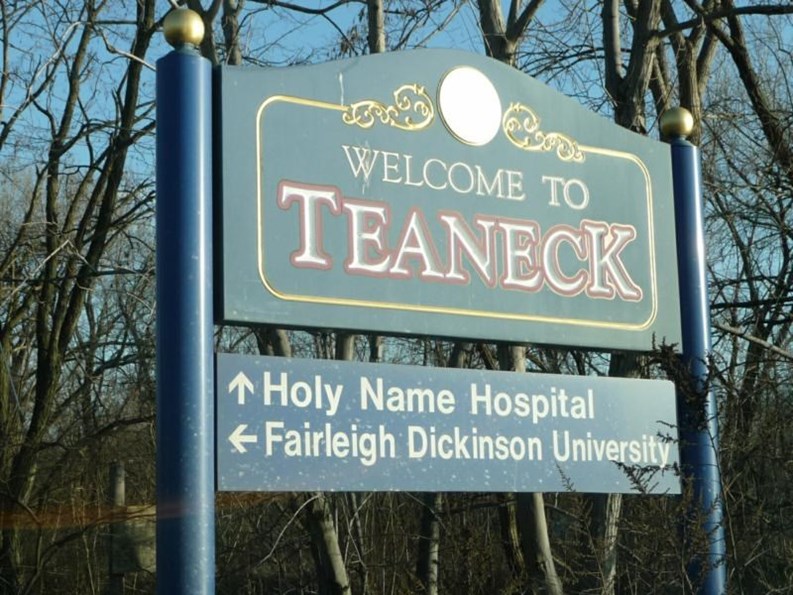When Mohammed Hameeduddin was elected Mayor of Teaneck last July, he became the first Muslim mayor in Bergen County history. He won that seat by edging out Deputy Mayor Lizette Parker, who had hoped to make similar history by becoming the township’s first female African-American mayor.
The election, in which Hameeduddin gained the majority vote of his colleagues on the Township Council, underscores a striking attribute of Teaneck: its diversity. According to the Census Bureau’s most recent estimates, Teaneck— with a population of nearly 41,000 — is about 52 percent white, 30 percent black, and 10 percent Asian, with other races making up the remainder. Residents proudly point to the fact that in the 1960s, Teaneck was the first township in the nation to voluntarily integrate its schools.
But its diversity goes beyond the numbers. The Jewish community encompasses some 40 percent of Teaneck’s population, a fact clearly seen on Saturdays and Jewish holidays, when those residents forsake automobiles and take to the sidewalks to travel to religious services. Four schools attended by Jewish students and a high school serving Muslim students join the public school system in educating the township’s youth. The ancestral backgrounds of Teaneck residents include Italian, German, Russian, Irish, Polish, and West Indian.
After his election, Hameeduddin said, “In Teaneck, New Jersey, my religion never played a factor in people voting for me or against me. That is a testament to the town that we live in.”
With roots spreading back to a Dutch settlement of the 17th and 18th centuries, Teaneck’s earliest farmhouses were built near an old Indian trail running along the west bank of the Hackensack River. Caught in the midst of the Revolutionary War — during which both British and American troops occupied local homes — Teaneck residents witnessed Gen. George Washington's famous withdrawal of his colonial forces from nearby Fort Lee on the Hudson River. After the war, the community returned to a peaceful farm life, providing produce for markets in Paterson and New York City.
The arrival of the railroad — and wealthy New Yorkers — changed the face of the community, with spacious mansions and manor houses providing home bases for the area’s first “suburban” commuters. Among these was William Walter Phelps, whose spectacular mansion, “Englewood Farm,” rested amid nearly 2,000 carefully landscaped acres in the center of the community.
It wasn’t until 1895 that Teaneck became a township — carved from parts of the communities of Englewood, Hackensack, Ridgefield Park, Bergenfield, and Bogota. In the 1930s, the opening of the George Washington Bridge and the ease of travel it brought to Teaneck drew thousands of new home buyers to the community, nearly quadrupling the population, from 4,000 to more than 16,000 residents.
Teaneck Today
Encompassing just over six square miles and having little land left to develop, the township is limited in its ability to grow; its population has remained fairly steady over the past half-century, after dipping during a period of racial turmoil in the 1960s.
Condominiums on the market in Teaneck recently ran the gamut, from a one-bedroom unit on Teaneck Road, listed for $89,500, to several more spacious condos selling in the half-million dollar range. Single-family home listings, meanwhile, ranged from $229,900 cape built in the 1960s to a six-bedroom home at $799,000. According to township records, a 2007 estimate places the median income for a household in the township at $89,475, and the median income for a family at $108,167.
While the days of the magnificent mansion-builders have gone by, the township’s popularity among New York commuters remains strong. “A lot of professionals look to this area because of the proximity to New York, and the easy commute and transportation,” notes Roosevelt Hall, vice president of Mark DeLuca Realtors, which has offices in Teaneck and Secaucus. “They say they're moving to the country when they come here, but you're still close enough that you could hop right across the bridge and still be there for whatever you want to do. You're right there, minutes away from the city.”
That convenience is undoubtedly a boon for the real estate market in this challenging era. “It's better than a lot of other towns in New Jersey or across the country,” Hall suggests. Despite the proximity to the city, Teaneck residents can meet all their needs close to home: the community enjoys the benefits of four commercial districts, including the Cedar Lane area that underwent a major renewal in the past decade; educational institutions, including the Metropolitan Campus of Fairleigh Dickinson University; and cultural institutions, including the Bergen Philharmonic Orchestra.
And despite its proximity to the city, Teaneck residents can, indeed, enjoy the the “country” environment promoted by the township’s 23 municipally owned parks, 14 of which are developed. Additionally, Overpeck County Park, along the shores of Overpeck Creek, a tributary of the Hackensack River, covers more than 8,000 acres and extends beyond Teaneck into portions of Englewood, Leonia, Ridgefield Park and Palisades Park.
“It's a family-oriented community… there’s a lot of things geared towards families,” Hall says. “You have a lot of different people living next to each other, and everybody seems to get along.”
Pat Gale is a freelance writer and editor living in Massachusetts.







Leave a Comment